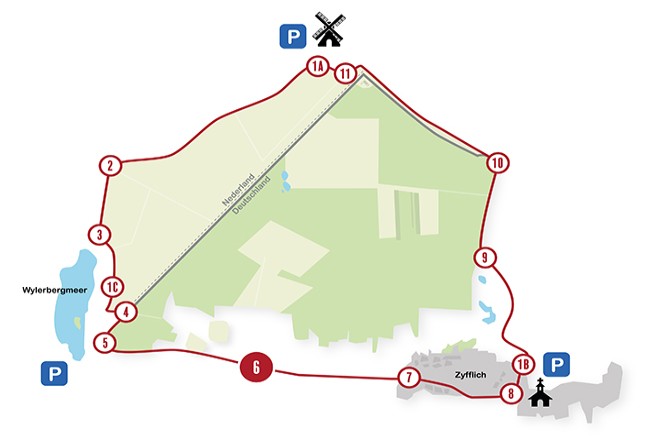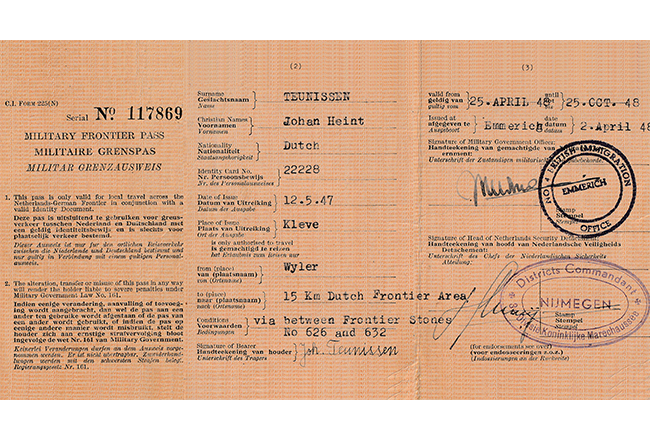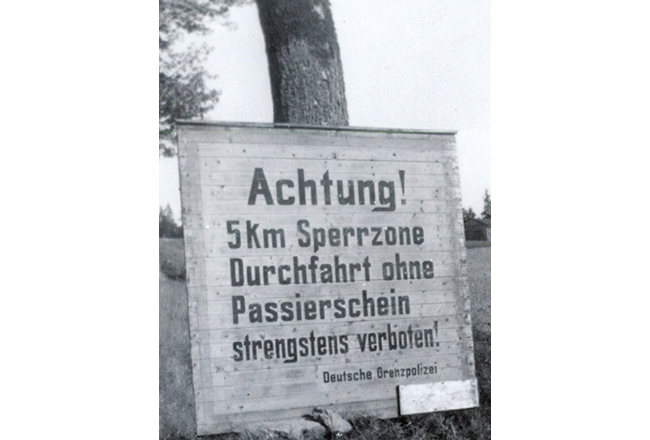Exclusion zone
The area around Kleve became a British military zone. The British troops did not want to be spied on during their preparations for the Rhine crossing. Consequently, a strip of approximately five kilometres wide, up to the road from Kleve towards Kalkar, was declared an exclusion area. As a result of this, the residents of the area who returned to the remnants of their homes after the end of the war, were driven away from their land for months yet again. Six weeks after the Rhine crossing, residents were allowed to return to their homes and found that many of their household items had been destroyed or disappeared.
From the 1st of May 1945, however, the British occupying forces again declared an exclusion zone consisting of a five kilometre wide strip on the German side of the border from Zyfflich to Kleve, driving the people who were living there from their homes once again. It was now feared that there would be a struggle between the Dutch border residents and the German border residents. For the second time, the residents were driven from their homes for months. Farmers were also prohibited from cultivating their fields and meadows. The area could only be entered with a special border pass.
The resulting refugee flow was largely housed in the overcrowded Bedburg-Hou. In March 1945, approximately 28,000 people, evacuees and former forced labourers, were brought together here. People were afraid to leave the camp. Every small favour had to be approved by the military regime.
At that time 34 bakers worked at the bakery and, out of the 3000 large animals grazing the fields around the camp, twenty butchers slaughtered twenty of them every day. The pigs were finished after a few days. The scanty food for 28,000 people consisted mostly of soup which was thickened with potato skin and a slice of bread with fat.









